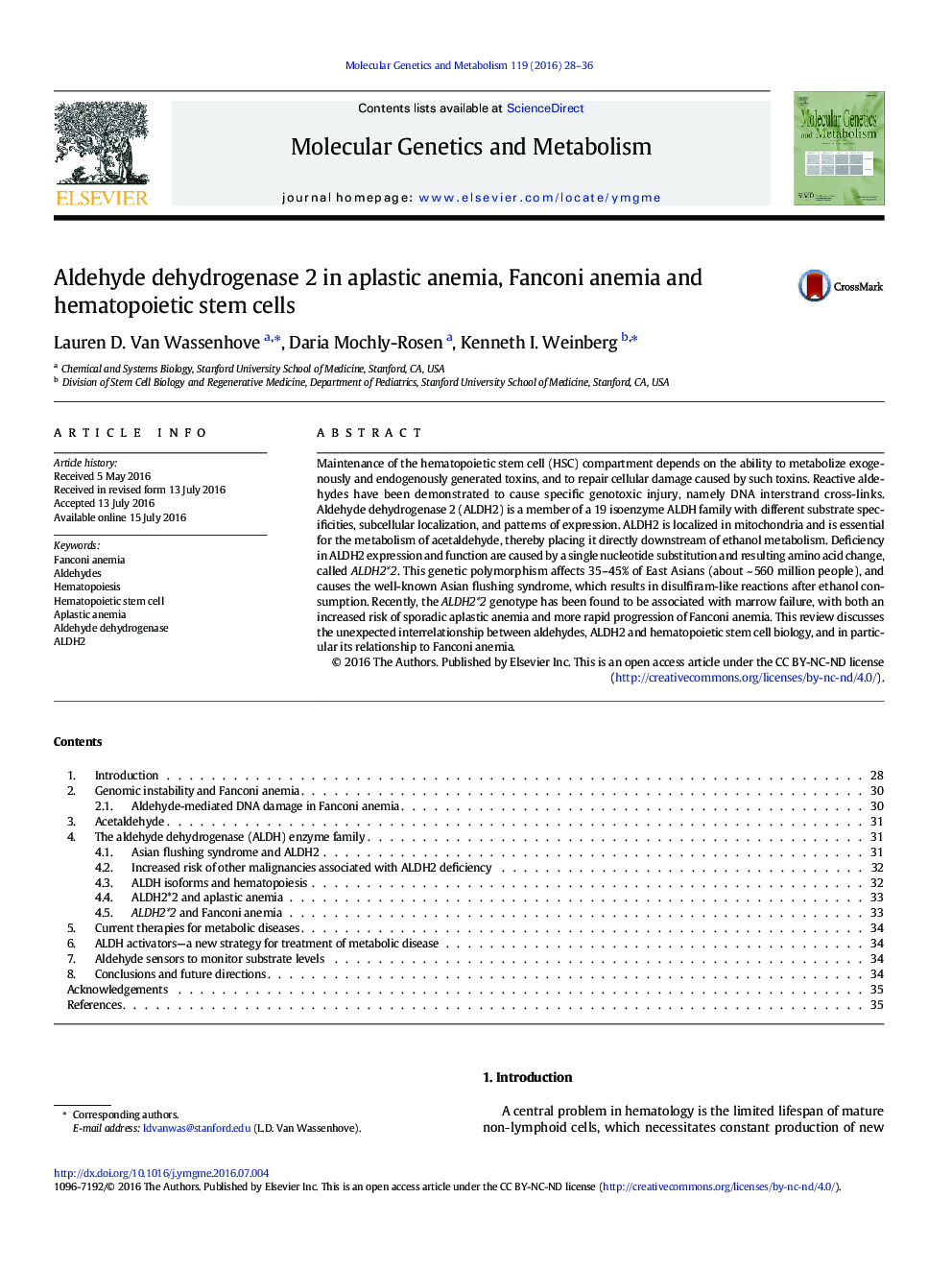| کد مقاله | کد نشریه | سال انتشار | مقاله انگلیسی | نسخه تمام متن |
|---|---|---|---|---|
| 5513984 | 1541557 | 2016 | 9 صفحه PDF | دانلود رایگان |
- Aldehydes cause DNA damage.
- ALDH2*2 genotype exacerbates Fanconi anemia (FA).
- Small molecule activators of ALDH2 activity may prevent marrow failure in FA.
- Small molecule activators of ALDH2 activity could prevent cancer in FA.
Maintenance of the hematopoietic stem cell (HSC) compartment depends on the ability to metabolize exogenously and endogenously generated toxins, and to repair cellular damage caused by such toxins. Reactive aldehydes have been demonstrated to cause specific genotoxic injury, namely DNA interstrand cross-links. Aldehyde dehydrogenase 2 (ALDH2) is a member of a 19 isoenzyme ALDH family with different substrate specificities, subcellular localization, and patterns of expression. ALDH2 is localized in mitochondria and is essential for the metabolism of acetaldehyde, thereby placing it directly downstream of ethanol metabolism. Deficiency in ALDH2 expression and function are caused by a single nucleotide substitution and resulting amino acid change, called ALDH2*2. This genetic polymorphism affects 35-45% of East Asians (about ~Â 560 million people), and causes the well-known Asian flushing syndrome, which results in disulfiram-like reactions after ethanol consumption. Recently, the ALDH2*2 genotype has been found to be associated with marrow failure, with both an increased risk of sporadic aplastic anemia and more rapid progression of Fanconi anemia. This review discusses the unexpected interrelationship between aldehydes, ALDH2 and hematopoietic stem cell biology, and in particular its relationship to Fanconi anemia.
Journal: Molecular Genetics and Metabolism - Volume 119, Issues 1â2, SeptemberâOctober 2016, Pages 28-36
